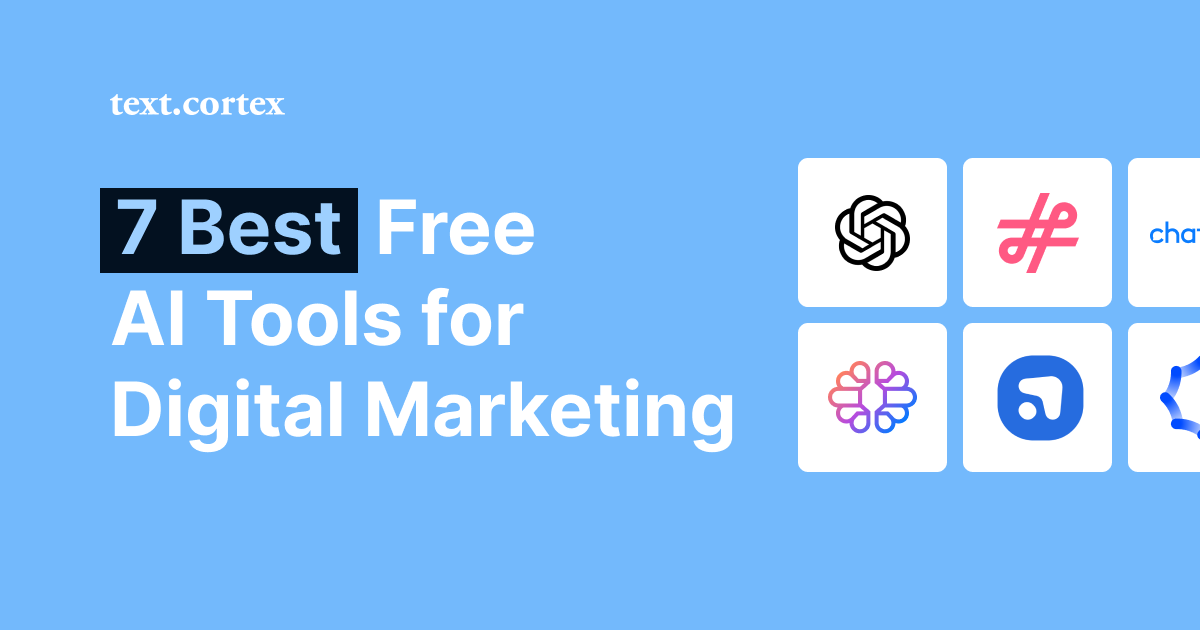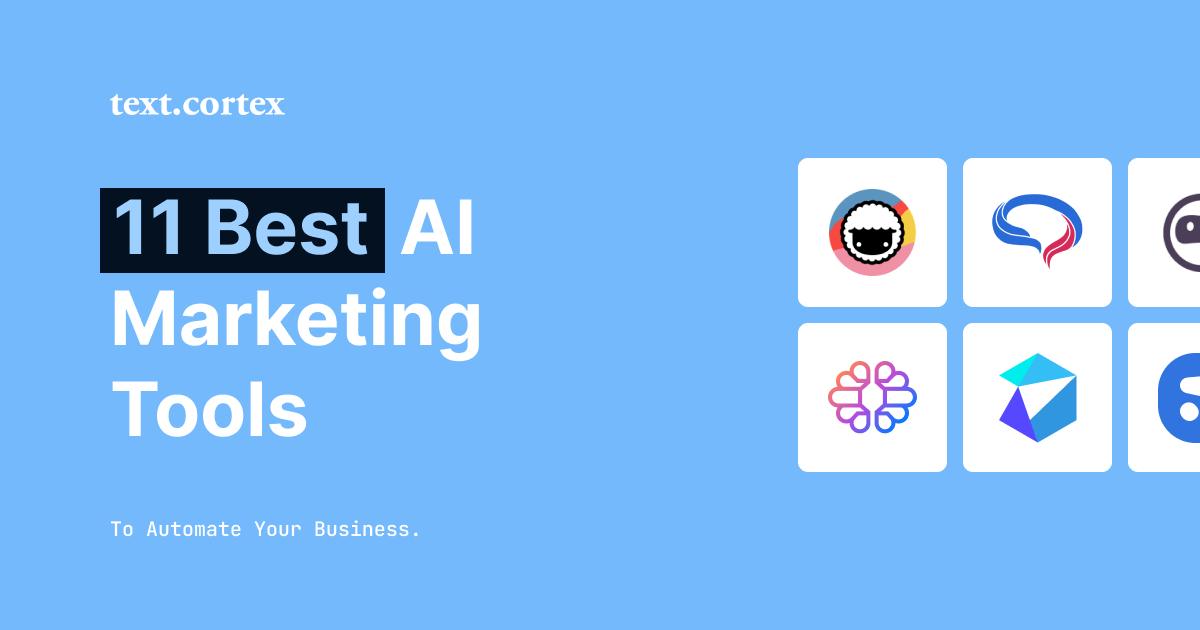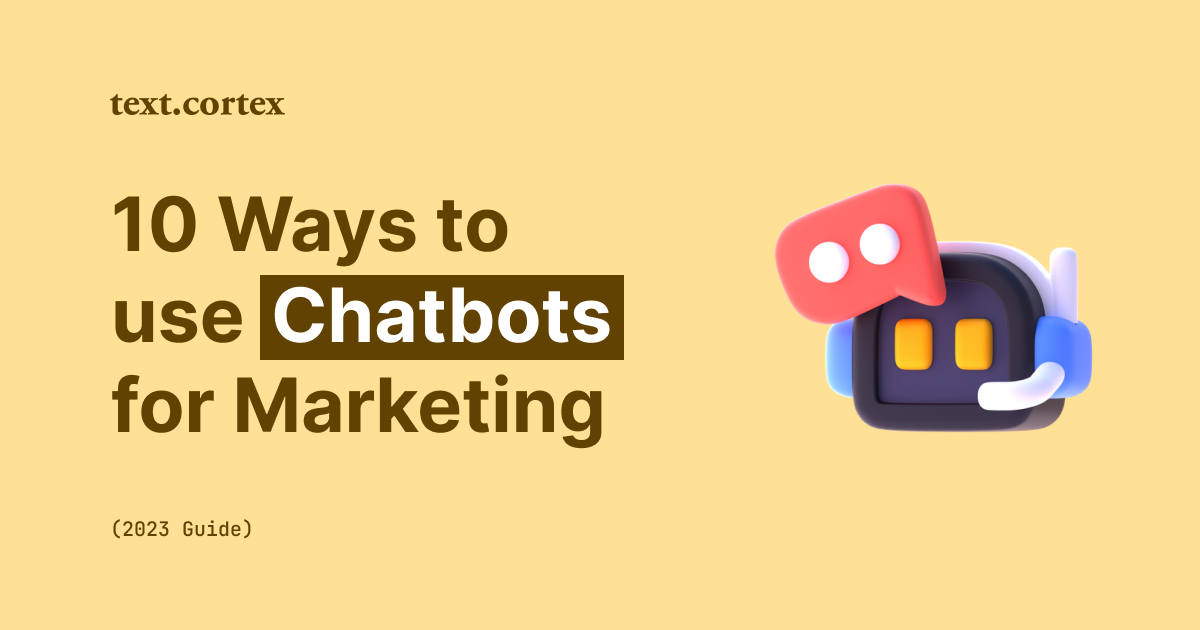Did you know that Facebook is still the leading social media platform with 2.936 billion active users by April 2022 and a potential advertising reach of 2.11 billion people?
When we talk about Facebook Ads as regular people, we can all agree that they can sometimes be over the top.
Conversely, from the perspective of a market manager, they are key players responsible for increasing organic traffic, new leads, and conversions.
However, if you are running a Facebook page and not getting desirable results from your ads, you're probably doing something wrong.
Today, we'll teach you how to write Facebook ad copy that converts like crazy to get a slice of that market cake but not overwhelm your potential customers.
Let's get started!🚀
Are Facebook Ads Effective For Generating Sales?
Did you know that 92% of marketers use Facebook for advertising?
The best approach to determine if Facebook Ads are worth the risk is by looking at the statistical data of the Facebook platform's coverage:
- Entertainment — 76% of users use it to search for exciting content.
- Marketing — 66% of social media users use Facebook to learn about new products and services.
- Influencing — Facebook influenced consumers' decisions to make online and offline purchases in 52 % of cases.
- Business — Customers are 79% more likely to make a new purchase if they like a business on Facebook than if they don't.
- Beneficial B2B domain — 73% of people use Facebook for professional purposes.
- Awareness builder — Compared to $35 for television commercials, Facebook ads' average cost per thousand impressions (CPM) is roughly $7.29.
Pretty impressive, right?
Hence, it is essential to comprehend why and where you are using your resources to grasp the fundamentals and set the sales ball in motion upward.
Since we know it is worthwhile, let's learn how to write Facebook ad copy that converts without fail.
How To Write Facebook Ad Copy That Converts — 9 Best Practices With Examples
1. Target Your Audience
The advantage of doing business on the Facebook platform lies in the fact that you can narrow your audience to your specifications.
Understanding your customers' needs and tailoring your copy with a personalized message for them are the two most important aspects of targeting your audience.
You can start by creating a buyer persona — the ideal customer.
And even though it sounds too fancy, the buyer persona concept is quite a simple trick most marketers often use.
To figure out your ideal customer, you can ask yourself these questions:
- What is their age?
- Where do they live?
- What is their daily routine?
- What troubles them?
- What are they interested in?
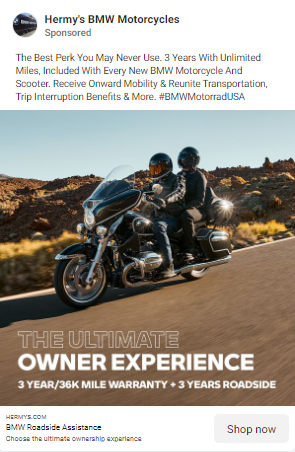
Knowing your ideal customer preferences allows you to easily navigate your marketing approach and influence them to purchase your product/service more efficiently.
A good thing about advertising on Facebook is that it offers you the ability to have deeper insights about your potential buyer with the Audience Insights feature.
You can access it by selecting the drop-down menu next to "Tools."
Here you can divide your defined "seed" audience depending on different preferences and demographic information.
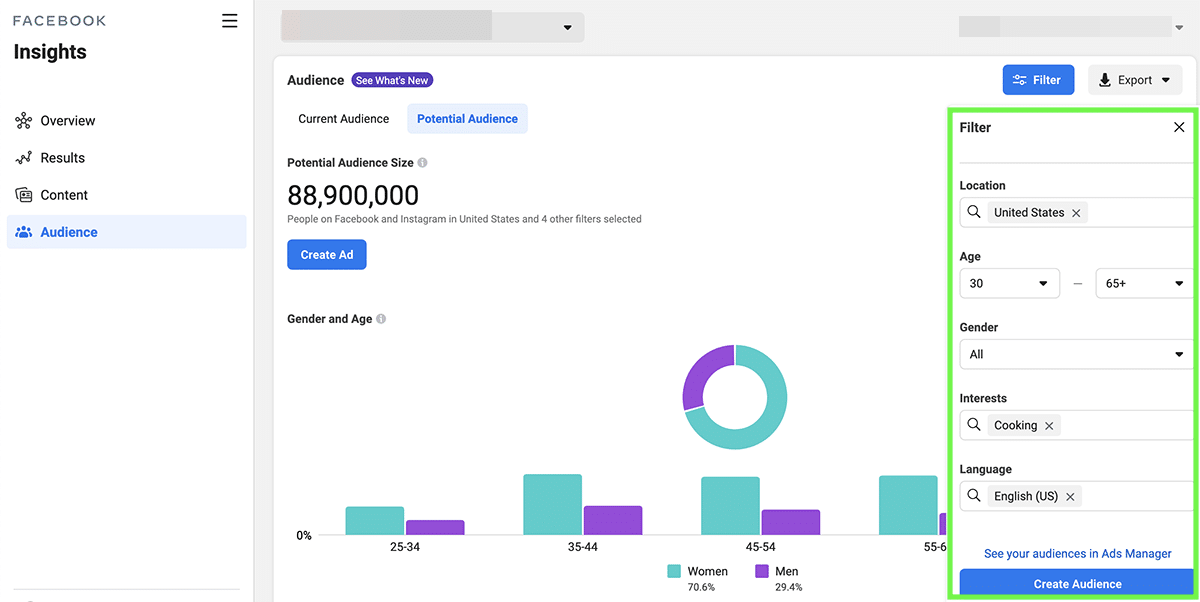
This option is part of Facebook Ad Manager and is only accessible via their API. Therefore, it is not available for regular users.
2. Let Your Images Do The Talking
Visuals are the most critical element of advertising. They are the most effective way to influence people's emotions, whether you want to make them angry, happy, or sad.
And is there a more practical approach to conveying your company mission than pictures?
I would go with No.
The same goes for Facebook Ads.
Facebook prioritizes the consumer experience. And to give customers the best value, they regularly tweak Facebook's Ad system to improve its effectiveness.
According to Facebook, having less than 20% of the text on images performs best.
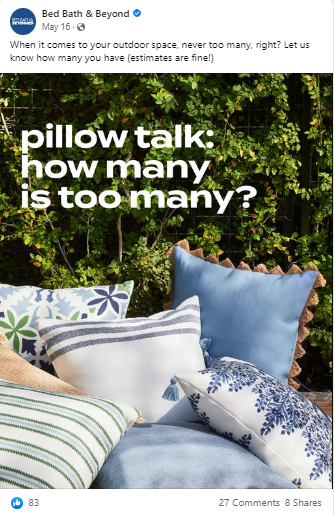
So next time you create your Facebook ad, avoid too much text in your ad images.
Here are some tips to help you out:
- If you need to include text in the image, try using fewer words and smaller font sizes for better readability.
- Most of the text you use should be in the body rather than directly on the advertisement's image.
- Be careful not to overwrite the image with text.
In case you do not have a dedicated team to design your photos for Facebook Ads, as first aid, you can consider using free applications such as Canva or Glorify.
2. Your First 3 Sentences Are Your Headline
On social media platforms, only 3-6 lines of text are visible before the reader decides to take action on what he sees — to scroll further or click “See more”.
Unlike blog posts, Facebook posts do not have a title name. Instead, those couple of opening lines are your headline, with a value comparable to the headline on your landing page.
Therefore, fine-tuning the images and these opening lines of text is where you should spend the most effort creating your advertisements.
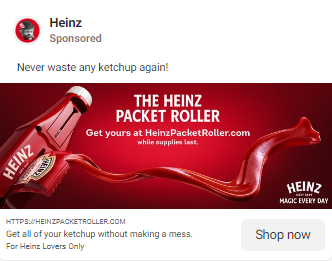
Moreover, this visible piece of your content is the second most important thing your customer sees.
That means the Facebook Ads image is responsible for 50% of your prospects' effective' hooking.'
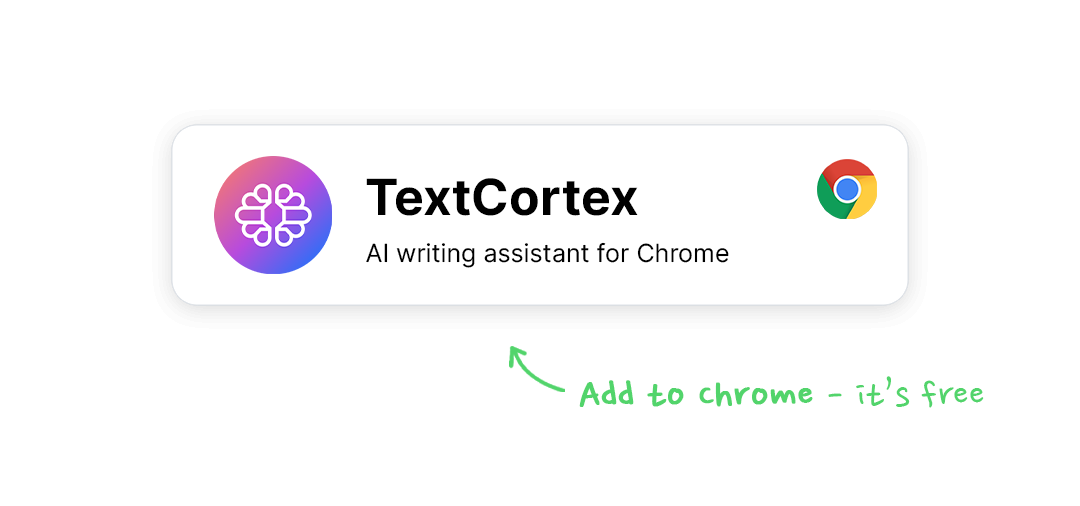
The exact amount of effort is required to create appealing text that matches the image quality and to entertain users to follow through with your Ad.
You can use the PAS method (Problem Agitate Solution) to get the full potential of your Facebook Ads.
This magical copywriting formula works like this:
- Identify customer's problem
- Agitate that problem
- And then offer a solution for it
The beauty of this method is that it allows endless variations while also producing outstanding results.
Here is how Expo Drone creates compelling Facebook Ad using PAS method:
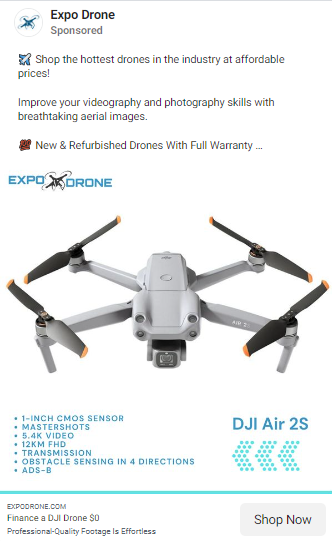
People like to relate themselves to the products they want to buy.
And there is no better way to begin constructing your Ad copy than by recognizing the problem they are experiencing and offering an attractive solution.
3. Tailor Your Ads In The Language Of Your Customers
Writing a technical specification for a product is one thing — yet, entirely another to use 'big' words in your Facebook ads just to play smart.
Naturally, you want to demonstrate your knowledge and that you are in charge of the field you represent, but remember that using huge terms can cause your copy to be unclear.
You may experience a shallow click-through rate response, contributing to low conversions and dissatisfaction.
To avoid such a scenario, keep it simple and to the point. Be bold with your content and tell your customers directly:
- Which problem does your product solve?
- What are the benefits they can get by using your product?
- What do you expect them to do next?
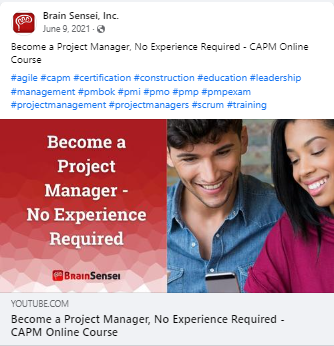
It is OK to leave out specific details of the product, service, or offer you are promoting from your advertisement.
Additionally, you can use concise and straightforward CTAs to point the reader on the right course.
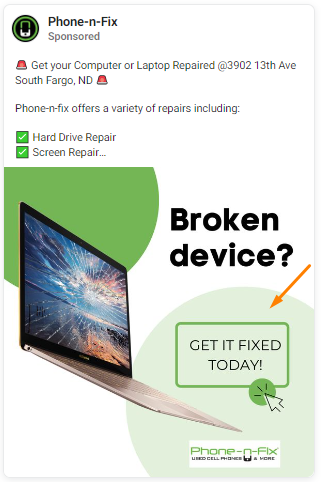
People scroll down Facebook seeking amusement, so you must use all legitimate means to grab their attention and convince them to click on your Ad.
Another excellent example of how to write Facebook ad copy that converts is to include emojis in your Facebook Ads.
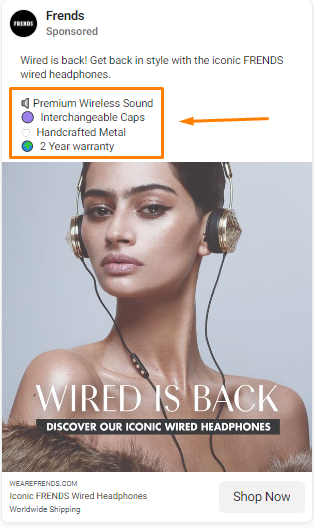
Emojis never get old — we use them to express an emotion or an idea. Furthermore, they are a positive distraction that screams, "Hey you, look this way!" without words.
Facebook Ads allow you to experiment with many variations of your copy, which you can modify according to Ad performance — until you discover the perfect form that gives the best results.
5. Invoke Customer’s Reaction Using FOMO effect
Many people underestimate the power of emotions, although they are your primary weapon when trying to win someone over.
When creating your Facebook Ad, think about which emotion can compel people to make a purchase.
Think of ways to thrill, astonish, and excite your audience.
For example, as a life coach, you must express empathy filled with a lot of wisdom.
People deal with various issues daily — identify the most prevalent ones and offer straightforward solutions.
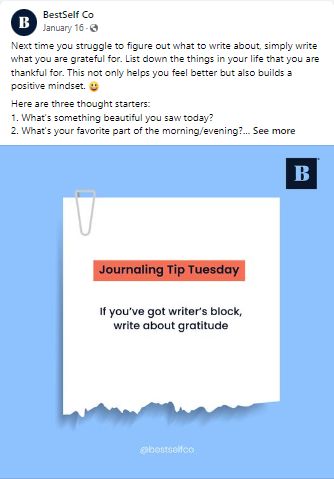
Consider your customers' worries, the mindset preventing them from moving forward, or any other feelings that come to mind.
Another good example is to offer something to ease their pain temporally.
Give them a present or a limited free trial. Little things can turn people into loyal customers even if they might not be ready to buy from you right away.
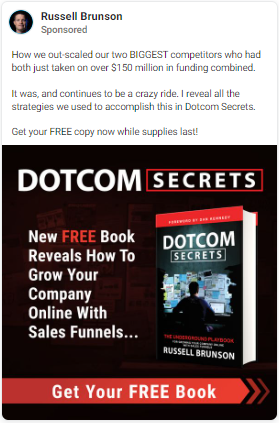
Another great emotion to use when creating Facebook Ads is a sense of urgency — also known as Fear Of Missing Out (FOMO).
Have you ever purchased a product online just because of a limited time window before the offer forever disappears? You probably have.
A statistic says that 56% of social media users experience FOMO.
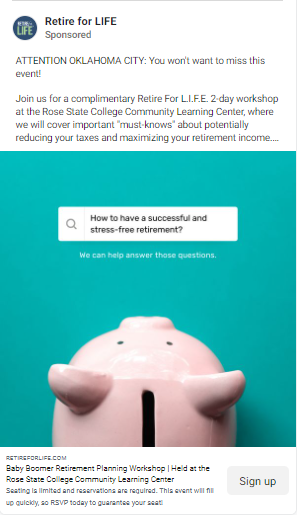
People often get anxious not to miss something that can be beneficial for their business or a private matter.
And that creates the ideal opening for your Ad to enter the picture.
Analyze your target audience's psychology to understand what motivates and drives them.
What are your customers pursuing? Which benefits can you offer to satisfy their shopping thirst?
That is a fantastic method to create advertisements that people will recognize and respond to.
6. Utilize Social Proof
To gain someone's trust, you need to deserve it first.
And ever since the beginning of time, money has been one of the hardest things people easily give away.
But what if there is no trust yet? How can you win your prospects over with a simple Ad?
Your social proof now plays a crucial role in establishing the credibility of your business.
That explains why famous people appear in advertising for popular products and why many platforms utilize reviews and user feedback.
Everyone competes to be the best in their area of expertise in online marketing.
Although the reasons might differ, the primary objective is a success.
To improve the performance of your Facebook Ads, focus on building trust with your prospects by including reviews and testimonials in your Ad visuals.
For example, imagine the scenario where you stumble upon the ideal product, but the brand is entirely new to you.
What would you rely on first:
- Product review where people share their experience with purchasing specific items?
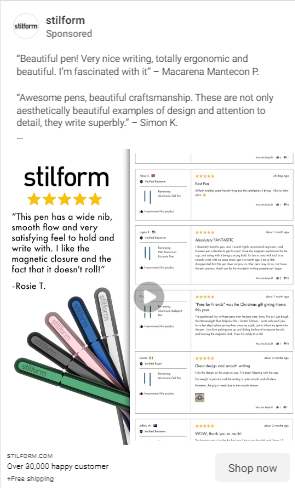
- Or store reviews where people provide overall experience about interaction with the company?
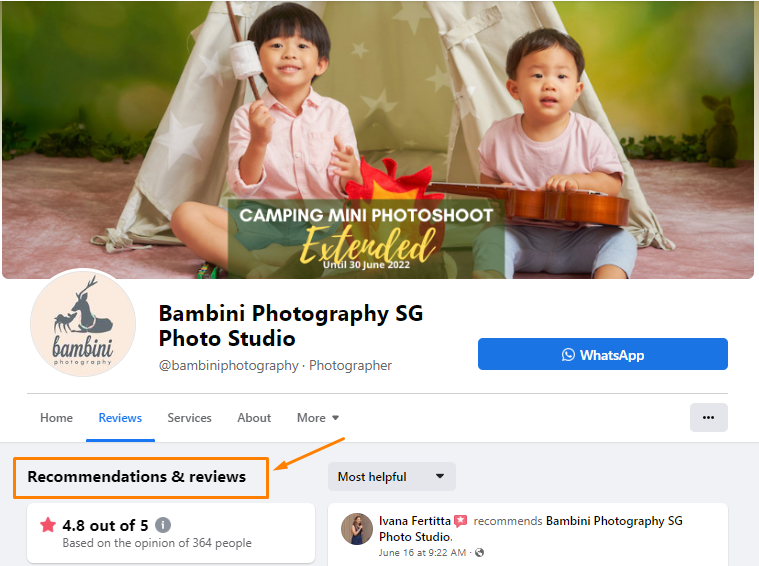
Products can have a bad batch, but interaction with a customer reflects the business plan, and losing that is much more difficult to make up for.
It is preferable if you have both.
However, before deciding to give your money away, you would want to hear about other people's experiences with a product or service you want to invest in.
How To Write Facebook Ad Copy That Converts Using TextCortex
Facebook Ads are an essential part of your marketing strategy, and while they take far less time to write than blog articles, they still require special attention to perform well.
We hope that these steps will assist you in creating and organizing your Facebook Ads more efficiently, allowing you to gain the prospects and conversions that your efforts deserve.
Managing your Facebook Ads is time-consuming, requiring extensive research, testing and effort to maintain consistent quality.
Even though copywriting is tedious and exhausting, there is a way to cut out a large percentage of your writing time.
For that purpose, we created TextCortex — to take away 80% of your writing work, and allow you to focus on other critical aspects of your marketing strategy.
TextCortex is a content writing software that can generate any content for you.
Utilizing it in your writing flow, you will be able to :
- Produce content at scale
- Generate short and long-form content types
- Rewrite sentences on the spot
- Create cold emails or Facebook Ad copies from bullet points
- Summarize content for brief information
- Expand your text from a single sentence
- Write YouTube Titles for videos
- Overcome writer’s block
- Improve your writing skills
How does TextCortex work?
TextCortex is a use-case module-based AI writing assistant that generates desirable text forms using machine learning and complex algorithms.
Our AI writers use the best practice knowledge base of 3 billion sentences to produce human-like output.
In other words, TextCortex can generate blog posts, product descriptions and titles, social media content, ads, and emails for you in seconds.
How to use TextCortex for creating Facebook Ads?
TextCortex is available as a web application and browser extension.
To use it, all you need to do is to:
1. Sign up for free or download a browser extension.
2. Click on the TextCortex logo in the bottom right corner to enter a Creator Suite.
3. Enter the ocassion of your Ad, then include a short description of the product or service along with the name of it.
4. Hit 'Create.'
The best part of TextCortex is that it offers free sign-up without limitations.
That means that our free version offers 10 creations per day, which you can increase by sending referrals to your friends and by validating the tool on Google reviews.
Sign up now and let TextCortex save time and money by creating Facebook ads for you with consistent copy quality that attracts more prospects and converts them into loyal customers.

![How To Write Facebook Ad Copy That Converts [+ Examples]](https://textcortex.com/cdn-cgi/image/format=avif,quality=90/https://assets-global.website-files.com/622611a2b23d0e6b270fba81/62cab34ef5513c3ca29b95e5_how%20to%20write%20fb%20ad.png)
